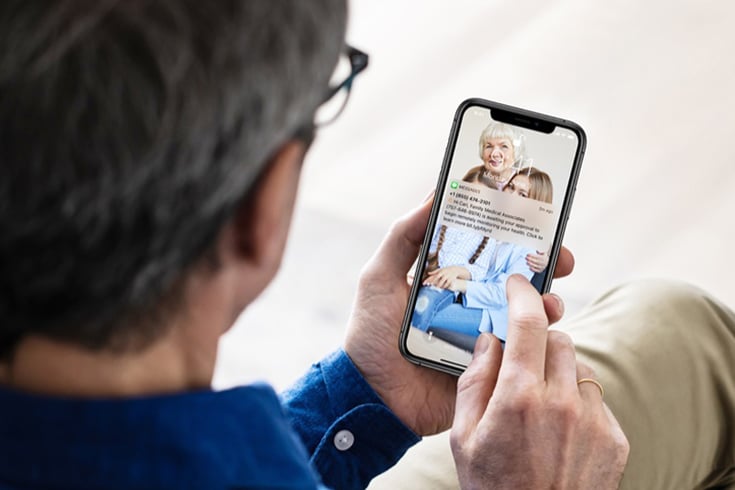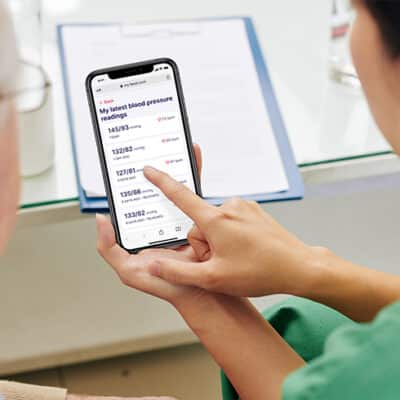Remote patient monitoring (RPM) is a proven and powerful tool for remotely managing chronic conditions, improving patient outcomes and reducing hospital readmissions. But for an RPM program to be truly effective, patient adherence is essential — and often one of the biggest challenges. Without consistent participation, even the best technology can’t deliver results. So, how can healthcare providers boost patient engagement and ensure long-term success?
4 Strategies to Increase Patient Adherence
Here are four key strategies to increase patient adherence to RPM programs:
Support Patient Education to Improve RPM Engagement
Some patients may be hesitant to use RPM technology due to a lack of understanding. For a patient to fully buy into the program, they need to understand why and how RPM can benefit their health. Clear and simple education about how RPM benefits their health can help increase participation. At 100Plus, our clinical monitoring team helps explain the benefits of RPM and provides ongoing educational support as part of the enrollment process, ensuring patients are well-informed and knowledgeable about the program.
Choose Easy-to-Use RPM Devices that Empower Patients
Patients with limited technology experience may feel intimidated by RPM devices, making them less likely to stick with the program. To ensure engagement, RPM technology should be user-friendly—especially for older adults or those unfamiliar with digital tools.
Key features to consider when selecting an RPM vendor:
- Simple Setup: Devices should be ready to use out of the box, with minimal configuration or pairing.
- Clear Instructions: Look for vendors that offer step-by-step guides, visuals, or even video tutorials.
- Automated Data Transmission: Patients shouldn’t have to manually enter or sync their data —automation helps reduce friction and build trust.
Provide Personalized Support to Improve RPM Adherence
Another common reason patients drop out of RPM programs is a lack of support. They may forget to take their vitals or feel like no one is actively monitoring the data. Programs like 100Plus help keep patients engaged with AI-powered virtual health assistance, providing check-ins, reminders, and encouragement via SMS text.
Unlike traditional customer service representatives, an AI virtual health assistant provides 24/7 support, keeping patients engaged and improving satisfaction with instant responses and reduced wait times. This round-the-clock accessibility not only enhances the patient experience but also provides peace of mind, knowing help is always available when needed. This type of continuous personalized engagement has been shown to increase patient adherence, leading to better health outcomes and long-term program success.
Maintain Continuous Communication and Active Monitoring
Patients are more likely to stay engaged when they know their healthcare team is actively monitoring their progress. Regular communication — not just automated alerts — helps patients feel valued and accountable.
To promote long-term engagement, make sure your RPM program includes:
- Periodic updates on patient progress
- Prompt follow-up on abnormal readings
- Regular discussions about RPM data during visits
- Adjustments to care plans based on real-time insights
The in-house clinical monitoring team at 100Plus can help your practice maintain continuous patient support and engagement. Our dedicated nurses and care managers actively monitor incoming data while keeping patients on track with ongoing SMS reminders, regular check-ins, personalized consultations, goal setting, and health education — ensuring they stay committed to their care plans.
Why it Matters
Increasing patient adherence to RPM programs requires more than just providing the right technology. It takes clear education, intuitive devices, personalized support, and ongoing communication.
When patients understand how remote monitoring benefits their health and feel supported throughout the process, they are more likely to stay engaged. These strategies help build trust, reduce hospital visits, and support better health outcomes—ultimately creating stronger relationships between patients and providers.
Start The Path Toward Better Patient Care
Have questions about how remote patient monitoring for healthcare will work for you and your patients? Let’s have a conversation.
Access the Latest RPM News
Stay up to date with the latest news, articles and webinars about remote patient monitoring and telehealth.
"*" indicates required fields



